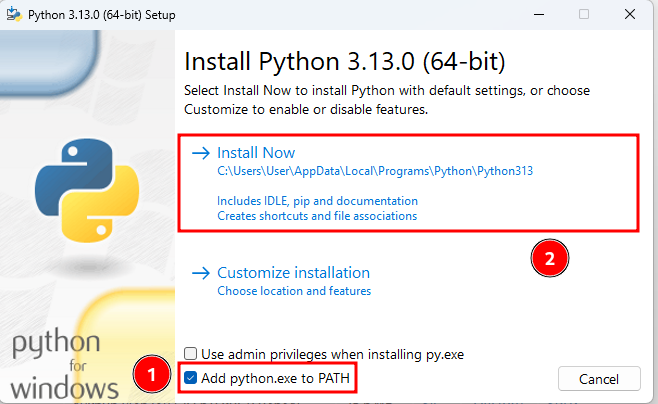10-Days of learning - Day 1 - Introduction to Malware and Python

Understanding the Threat Landscape
Malware continues to be one of the most significant threats in cybersecurity. As security professionals, understanding how malware works is crucial for developing effective defenses. In this article, we’ll explore the basics of malware and how Python can be used to enhance our security measures.
What is Malware?
Malware (malicious software) refers to any program designed to harm computer systems, networks, or users. Common types include:
- Viruses: Programs that replicate by modifying other files
- Worms: Self-replicating programs that spread through networks
- Trojans: Malicious software disguised as legitimate programs
- Ransomware: Programs that encrypt user data and demand payment
- Spyware: Software designed to collect user information without consent

Why Python for Security?
Python has become an essential tool in cybersecurity for several reasons:
Ease of Use — Python’s clear syntax makes it ideal for rapid tool development
Rich Libraries — Extensive security-focused libraries such as:
- pefile: For analyzing Windows PE files
- requests: For network traffic analysis
- psutil: For system monitoring
- yara-python: For malware pattern matching
Versatility — Python can be used for various tasks in cybersecurity, from automation and scripting to penetration testing and malware analysis. Its versatility makes it a valuable asset for security professionals.
Community Support — Python has a large, active community that contributes to a wealth of resources, libraries, and frameworks. This support makes it easier for security professionals to find help, share knowledge, and collaborate on projects.
Cross-Platform Compatibility — Python runs on multiple platforms (Windows, macOS, Linux), making it suitable for a wide range of environments. This flexibility allows security tools and scripts to be deployed across different systems without major modifications.
Integration with Other Tools — Python easily integrates with other technologies and tools commonly used in cybersecurity, such as SIEM systems, intrusion detection systems, and various APIs. This capability enhances its utility in creating comprehensive security solutions.
Educational Resources — There are numerous tutorials, courses, and documentation available for learning Python in the context of cybersecurity. This accessibility helps professionals, especially beginners, quickly get up to speed with the language and its applications.
Real-World Applications — Many established security tools and frameworks, such as Metasploit and Scapy, are built on Python, highlighting its relevance and effectiveness in real-world cybersecurity scenarios.

Setting up the environment — Linux Setup (Debian/Ubuntu)
First, open a terminal and run the following commands.
# Update and install Python
sudo apt update
sudo apt install python3 python3-pip python3-venv Create and activate virtual environment.
# Create project folder
mkdir security_project
cd security_project
# Create and activate virtual environment
python3 -m venv security_env
source security_env/bin/activate Install required libraries, these are recommended for the type of material we are going to use.
# Install the libraries we'll use
pip install requests # For HTTP requests
pip install psutil # For system monitoring
pip install pefile # For analyzing PE files
pip install yara-python # For malware pattern matching Setting up the environment — Windows Setup

- Download Python 3 from https://www.python.org/downloads/windows/
- During installation, check “Add Python to PATH”
- Click “Install Now”

Create and activate virtual environment
# Create project folder
md security_project
cd security_project
# Create and activate virtual environment
python -m venv security_env
security_env\Scripts\activate Install required libraries
# Install the libraries we'll use
pip install requests
pip install psutil
pip install pefile
pip install yara-python Verify Installation
Open a terminal and create a file named test_setup.py with the following content:
# Save this as test_setup.py
import requests
import psutil
import pefile
import yara
def check_setup():
print("All required libraries are installed successfully!")
if __name__ == "__main__":
check_setup() Run the test by typing the following command:
# For both Windows and Linux
python test_setup.py Cleanup
Whenever you’re done working run the following command:
# On Linux or Windows
deactivate Best Practices for Security Development
When developing security tools, always follow these principles:
- Isolation: Test in isolated environments
- Logging: Maintain detailed logs of all activities
- Authentication: Implement proper access controls
- Encryption: Protect sensitive data
- Error Handling: Implement robust error handling
Learning Resources
To deepen your understanding of security with Python:
- Books:
- “Black Hat Python” by Justin Seitz
- “Violent Python” by TJ O’Conno
2. Online Resources:
- OWASP Python Security Project
- Python Security Documentation
- NIST Cybersecurity Framework
Understanding malware and developing security tools with Python are essential skills for modern cybersecurity professionals. Focus on defensive programming, follow best practices, and continuously update your knowledge as threats evolve.
Remember: With great power comes great responsibility. Always use your knowledge ethically and legally to protect systems and users.
Next Steps
In future articles, we’ll explore:
- Advanced file analysis techniques
- Network traffic monitoring
- System behavior analysis
- Automated threat detection
- Security tool development
Stay tuned for more practical security content!
